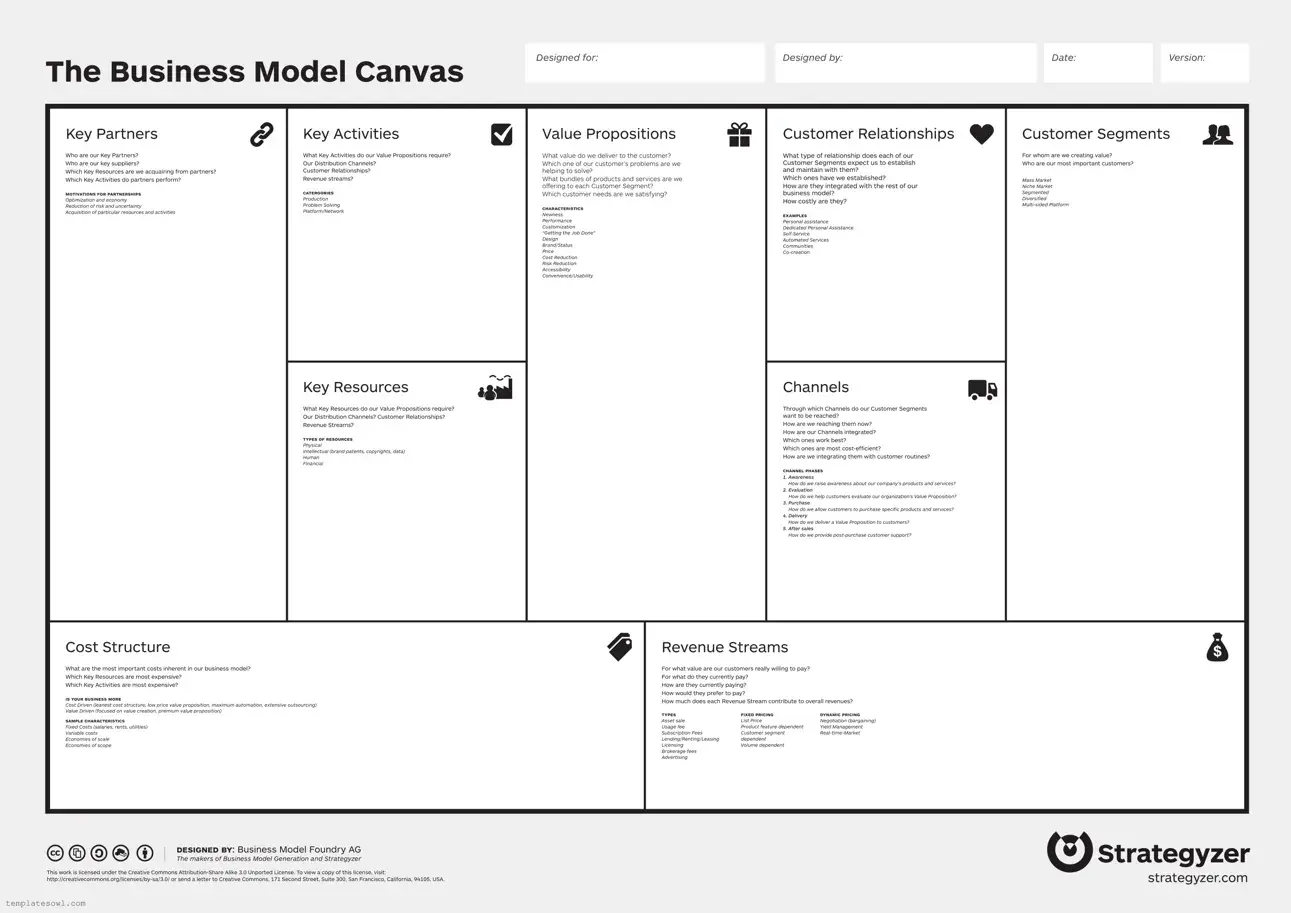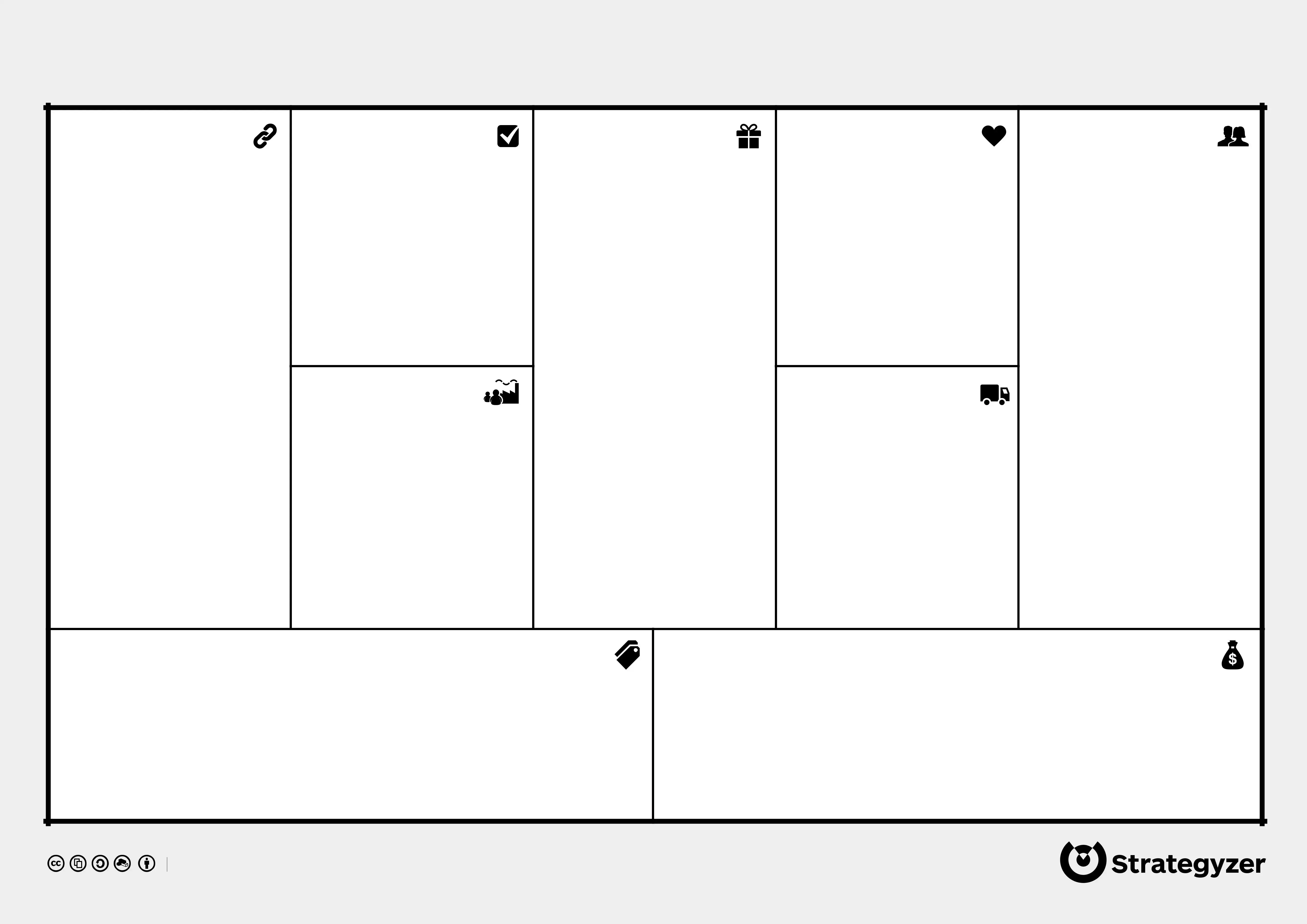What is the Business Model Canvas Editable form?
The Business Model Canvas Editable form is a strategic management tool designed to help businesses visualize, design, and assess their business model. It provides a clear layout that outlines the key components of a business, including partnerships, activities, resources, value propositions, customer relationships, channels, customer segments, cost structure, and revenue streams. This format allows for easy tweaking and modification to adapt to changing business needs.
Who can benefit from using the Business Model Canvas Editable form?
Entrepreneurs, startups, and established businesses alike can benefit from using the form. It's especially useful for those looking to refine their strategies, explore new ideas, or pivot their existing models. Consultants and business educators can also use it to illustrate concepts to clients or students.
How can I use the form to develop my business model?
To develop your model, start by filling in each section systematically. Identify your key partners and activities, outline your value propositions, and define customer segments. Take your time to analyze how different components interact with each other. This holistic approach will ensure you cover all critical aspects of your business.
Can the Business Model Canvas Editable form help improve my existing business?
Yes, the form can provide new insights into your existing business model. By evaluating each section, you may discover areas for improvement or untapped opportunities. Adjusting different elements based on market feedback can enhance value delivery and increase customer satisfaction.
Is this form suitable for companies of all sizes?
Absolutely! The Business Model Canvas is versatile and can be adapted for small startups to large corporations. Each company can tailor the form to fit its specific context and size, making it an effective tool regardless of business scale.
How often should I revisit and update my Business Model Canvas?
It's advisable to review and update your Business Model Canvas regularly, especially when there are significant market changes, shifts in customer behavior, or after completing major projects. Regular assessments will keep your business strategy relevant and responsive to evolving conditions.
What types of value propositions can I outline in the form?
You can outline various types of value propositions based on your business." These may include newness, performance enhancements, customization, problem-solving, and convenience. Consider what makes your product or service unique and how it addresses customer needs.
How can the form help in identifying customer segments?
The form encourages you to think deeply about whom you are serving. By categorizing your audience into mass markets, niche segments, or multi-sided platforms, you can better tailor your marketing strategies and product offerings. This targeted approach will lead to improved customer relationships and loyalty.
What are the most common mistakes when using the Business Model Canvas?
Common mistakes include failing to communicate with team members during the filling process, not being specific enough in the value propositions, and neglecting to update the form with fresh insights. Engaging your team and discussing each component can lead to more comprehensive and accurate modeling.
Where can I find resources or guidance on how to use the Business Model Canvas?
Resources to help you use the Business Model Canvas effectively can be found online. Websites like strategyzer.com offer tutorials, examples, and tools to guide your implementation. Additionally, many business books and courses include sections dedicated to the Business Model Canvas.

